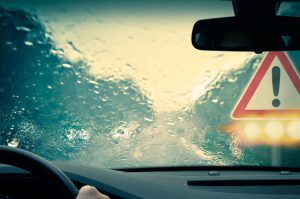
Are you used to driving on dry roads while it’s sunny outside? If you’re a new driver, you have to be aware of the fact that the weather won’t always be that good. Sometimes you’ll be forced to drive in conditions such as heavy rain, hail or even snow and ice storms, which can greatly impair your visibility as well as your ability to control the car.
Essential Precautions to Consider
One of the most underrated tips for driving in bad weather is to slow down, that is however what they teach you at the driving schools in Parker Colorado and makes a difference. This recommendation cannot be stressed enough because conditions such as icy roads, misty areas or heavy rainfall can often cause an accident if you don’t see or can’t avoid an obstacle in time. So, to be able to take preventive measures, make sure you drive about 10 mph below the speed limit at all times. If the weather conditions are even worse and your steering feels iffy, consider reducing your speed an additional 5 mph.
Tailgating should also be avoided. Even though in some states tailgating is considered illegal, this isn’t true everywhere. So, in bad weather, you have to take precautions to avoid tailgating, since it’s virtually impossible to brake fast enough if the road is covered in snow or rainwater. When you’re on the highway, make sure you can keep a distance of about 100 yards between your car and the car ahead at all times. If you see that you’re getting too close, simply slow down until the distance is restored to 100 yards or so.
Probably the most crucial bad weather advice is to avoid black ice. This type of ice is extremely hard and slippery, and you’ll find it nearly impossible to control your car for any length of time while skidding on it. So, make sure you take precautions such as slowing down and keeping your headlights on at all times in bad weather. Your headlights could provide you with an advantage, because they can reveal black ice by reflecting light off of it, especially during the night.
How to Turn Under Bad Weather Conditions
Aside from slowing down and stopping, turning under bad weather conditions might be one of the most difficult things to do. If you want to turn correctly and avoid having the back of your car run off, or the front running into oversteer, make sure you take your foot off the gas pedal as early as possible before the turn, and then gently press the brake while you still haven’t reached the turn.
Once you’re at a safe enough speed, take your foot off the brakes and engage the turn without hitting the gas. That way, your steering will be smooth, and you don’t run the risk of understeering or oversteering.
If you’ve already partially lost control of the car, and you feel that the vehicle is starting to skid to the left or right due to the slippery surface, make sure you stay calm and remove your feet from any of the pedals, allowing the car to run free. Then gently steer the car in the same direction as where it’s skidding towards.
For instance, if it’s skidding to the right, steer gently to the right until you feel that you’re going into a controlled right turn. After that, you can slowly control the movement through gradual left and right turns on the steering wheel, until the car regains its balance on the road.
